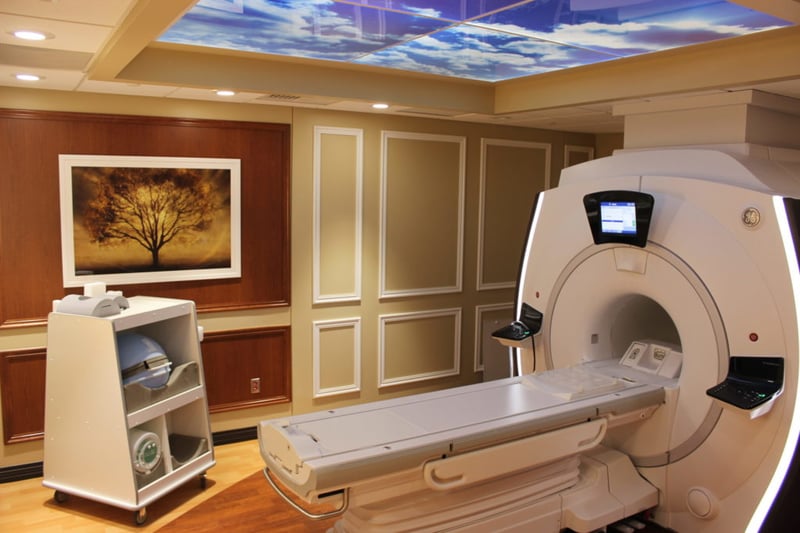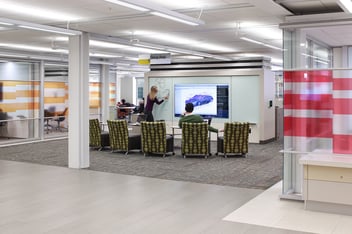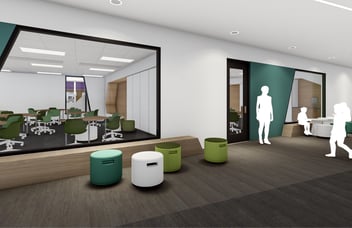
At CMBA Architects, we always design spaces with the end user in mind. When it comes to medical spaces like hospitals, surgery centers, and doctors’ offices, we need to consider several audiences:
- 1 The doctors, nurses and hospital staff need a space that is functional and efficient.
- 2 Those visiting need a space that is warm and comforting—as well as comfortable.
- 3 Patients need spaces that allow for privacy and encourage healing.
While it may not seem obvious at first, an open-concept world with few blank walls leaves little space for art. That’s why as architects, it’s important for us to remember to create spaces for art—especially in medical facilities.
An Exploration of the Impact of Art from the National Institute of Health
Earlier this year the National Institute of Health (NIH) conducted a 20-day study entitled “How do patients actually experience and use art in hospitals? The significance of interaction: a user-oriented experimental case study.” In this study, they explored whether art changed the expectations of patients regarding the hospital or staff.
While the NIH found that patient satisfaction wasn’t necessarily directly influenced by the presence (or lack) of artwork, when it came to interaction, there was a noticeable difference.
Through observation, they noted that patients sat or stood near the wall more often when artwork was present and avoided the wall when it was blank. This reaction was mostly subconscious, but indicated patients were more comfortable with art on the wall than they were with a blank wall.
Social and Emotional Effects of Art in Hospitals
The NIH also explored the social and emotional effects of art on the patients they observed.
The study notes that patients socialized with others more when artwork was present. In addition, they had a better overall mood in the room with art versus the room with the blank wall.
NIH concluded the presence of artwork created a sense of togetherness and ease for patients. Allowing patients to relate better to their surroundings can be helpful in times of stress.

Art Provides A Distraction From Realities Of Medical Care
Art Provides a Distraction from Realities of Medical Care
Patients also found the art to be a welcomed distraction from their medical situation. It provided a comforting element that gave them a deeper sense of well-being. The artwork also appeared to help them feel more comfortable navigating the room.
Overall, the study found that visual art in hospitals and medical spaces does contribute positively to health outcomes.
In particular, art influences patients’ experience of safety, comfort, time, and identity. It also leads to a perception of enhanced quality and satisfaction among patients, which is good news for hospital administrators!
How is art perceived in your medical facility? And do you feel like there is enough space in your facility for art?


